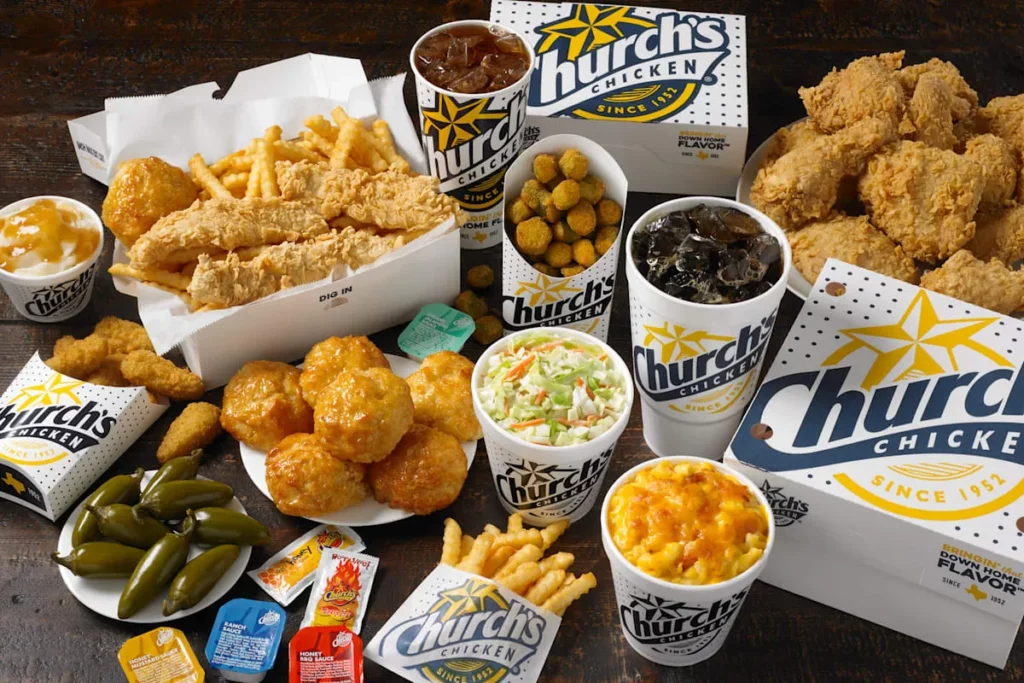Does Popeyes own Churches? The curious case of these two chicken giants has sparked intrigue and confusion in the international marketplace. Join us as we unravel the power of adaptability in a globalized market and explore the fascinating connection between these beloved fast-food chains. Get ready to uncover the surprising truth behind the chicken empire’s ownership and the juicy details that will leave you clucking for more!
Table of Contents
The Curious Case of Church’s Chicken and the International Marketplace

In the realm of fast-food giants, Church’s Chicken stands tall as a formidable contender, tantalizing taste buds with its delectable fried chicken and tantalizing sides. However, beneath the crispy coating of its signature dish lies a lesser-known tale of rebranding and strategic maneuvering in the international arena.
A Name Change to Avoid Misconceptions
As Church’s Chicken ventured beyond the borders of the United States, it encountered a peculiar challenge: the potential for misinterpretation stemming from its name. In many cultures, the word “church” carries strong religious connotations, which could inadvertently alienate potential customers who might perceive the restaurant as being affiliated with a particular faith.
To circumvent this potential pitfall, Church’s Chicken made a decisive move in the 1980s: it adopted the moniker “Texas Chicken” for its international operations. This strategic decision was driven by a desire to dispel any notion of religious association and to project an image that resonated more broadly with global consumers.
Texas Chicken: A Symbol of American Heritage
The choice of “Texas Chicken” as the international brand name was not merely a matter of convenience; it was a carefully calculated move designed to evoke specific associations in the minds of foreign consumers. Texas, a state renowned for its rich cowboy culture and rugged individualism, embodies a distinctly American identity that transcends geographical boundaries.
By adopting the “Texas Chicken” name, the brand aimed to capitalize on these positive perceptions, conjuring up images of wide-open spaces, hearty meals, and the adventurous spirit of the Wild West. This strategic rebranding effort proved to be a resounding success, helping Church’s Chicken to establish a strong presence in international markets.
A Refreshing Fusion in Canada
In 2019, Church’s Chicken unveiled a refreshed logo in Canada, where it operates under the name Church’s Texas Chicken. This subtle yet significant change reflects the brand’s commitment to maintaining a strong connection with its American roots while simultaneously acknowledging the unique cultural landscape of Canada.
The dual branding strategy employed in Canada underscores Church’s Chicken’s adaptability and willingness to tailor its approach to the specific nuances of each market it serves. By retaining the “Church’s” name alongside the “Texas Chicken” moniker, the brand pays homage to its heritage while simultaneously embracing the multicultural tapestry of Canada.
The Power of Adaptability in a Globalized Market
The story of Church’s Chicken’s international rebranding efforts serves as a testament to the importance of cultural sensitivity and adaptability in the global marketplace. By shedding its potentially polarizing name in favor of one that evokes a more universally appealing image, Church’s Chicken successfully navigated the complexities of international expansion and established a strong foothold in diverse markets.
The brand’s strategic rebranding initiative highlights the need for businesses to carefully consider the cultural context of their target markets and to tailor their messaging and branding accordingly. By demonstrating a willingness to adapt and embrace local sensibilities, companies can effectively overcome barriers to entry and achieve lasting success on the global stage.
FAQ & Common Questions about Church’s Chicken’s International Branding
Q: Why did Church’s Chicken consider changing its name in international markets?
A: Church’s Chicken considered changing its name in international markets to avoid potential misconceptions and religious connotations that could alienate potential customers.
Q: What was the dual branding strategy employed by Church’s Chicken in Canada?
A: In Canada, Church’s Chicken employed a dual branding strategy by retaining the “Church’s” name alongside the “Texas Chicken” moniker to pay homage to its heritage while embracing the multicultural tapestry of the Canadian market.
Q: How did the adoption of the “Texas Chicken” name benefit Church’s Chicken in international markets?
A: By adopting the “Texas Chicken” name, Church’s Chicken aimed to capitalize on positive perceptions associated with the name, conjuring up images of wide-open spaces, hearty meals, and the adventurous spirit of the Wild West, which proved to be a successful rebranding effort.
Q: What does the case of Church’s Chicken’s international branding demonstrate about adaptability in a globalized market?
A: The case of Church’s Chicken’s international branding demonstrates the power of adaptability in a globalized market, showcasing the brand’s willingness to tailor its approach to specific market nuances and its success in establishing a strong presence in international markets.
Q: What challenges did Church’s Chicken encounter as it expanded beyond the United States?
A: Church’s Chicken encountered the challenge of potential misinterpretation stemming from its name in international markets, where the word “church” carries strong religious connotations, which could inadvertently alienate potential customers.















